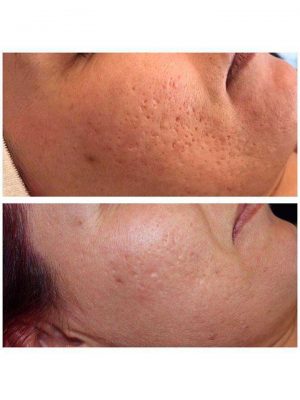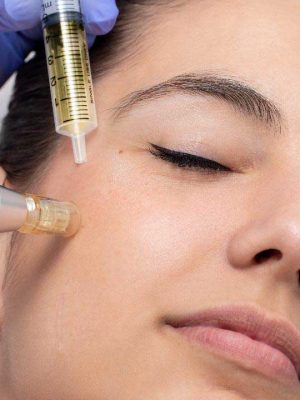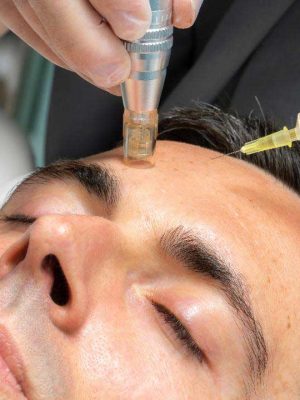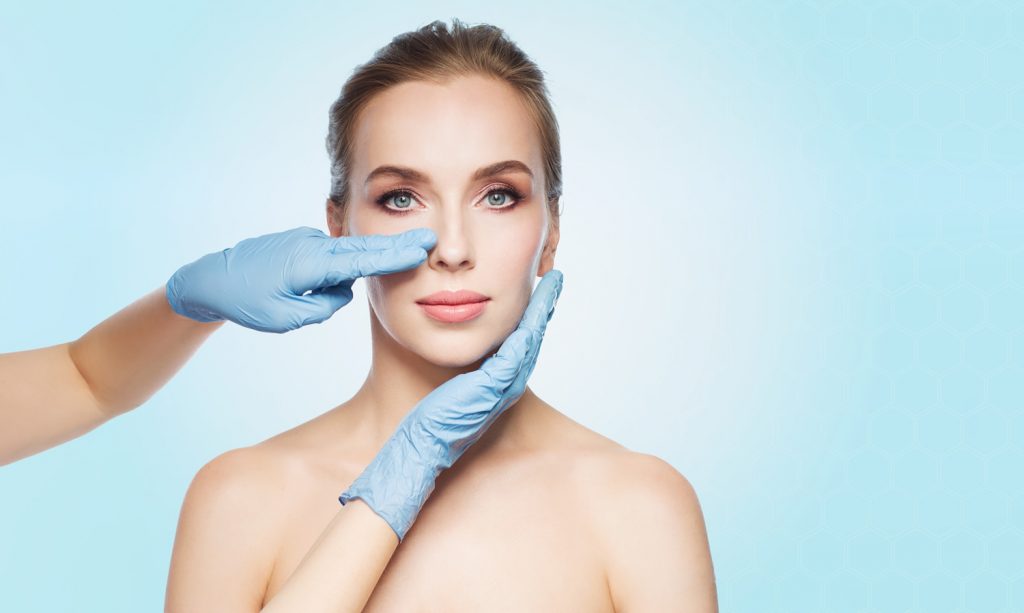Micro Needling
- Home
- |
- Micro Needling
Treatments
What is it and how does it work?
Also known as Dermapen, dermal and skin needling, microneedling is a minimally-invase and non-surgical treatment for facial rejuvenation that involves the use of a micro-needling device to create controlled injury to the skin. As each extremely fine needle punctures the skin, it creates a channel or micro-wound which encourages the skin to produce new collagen and elastic in the papillary dermis. In addition, new capillaries are formed and we encourage these developments by the concurrent use of specific growth factors and peptides. Overall, microneedling leads to firmer, more hydrated and rejuvenated looking skin.

What conditions can Microneedling treat?
- General skin laxity and sagging
- Fine lines and wrinkles
- Large pores
- Acne scaring
- Other scaring (traumatic, chicken pox, etc)
- Stretch Marks
- Crow’s feet (side of eyes)
Is there any downtime?
Individual downtime varies. For most, immediately after the treatment the skin can appear red and will feel tight due to slight swelling, which generally subsides within 24-48 hours. The skin may feel dry and appear flaky for up to 4 days post treatment. However, we use a combination of high quality moisturising creams and serums, LED Light Therapy, hydrating and recovering masks and our Cryo cooling system after every treatment to help speed up the skin’s natural healing process as well as to help enhance overall results.
Can it be cobined with other treatments?
Yes, we love combining microneedling with PRF , CO2 Fractional Laser and certain chemical peels to specifically target skin issues and conditions and enhance results.

Does it hurt?
Whilst we prefer not to use any numbing to enhance results, a topical numbing cream can be used to minimize discomfort. We also use our CryoJet cooling system to help further numb the treated areas.

How many treatments are needed?
The number of treatments vary upon the individual and whether or not there is a condition to be treated. Generally we recommend a course of 3 treatments 4-6 apart with further maintenance treatments every 2-4 months to help maintain results. For some, we recommend interchanging treatments with chemical peels, lasers and PRF to maximize results. However, this depends on the severity of the condition of the skin and is discussed during the consultation and assessment.
Is it safe?
Professional microneedling performed in a sterile environment like ours is considered to be one of the safest skin treatment procedures. Unlike chemical peels, microdermabrasion and laser treatments, it causes minimal damage to the skin therefore reducing the risk of pigmentation problems post treatment. It can also be used on ALL skin types and on areas of the skin where lasers are contra-indicated, such as around the eyes.
Micro Needling
- Home
- |
- Micro Needling
What are Dermal Fillers used for?
- Replace volume loss from the mid-face and temples
- Elevate and reposition eyebrows which have dropped
- Replace volume loss in the temples
- Lift Jowels and sagging of the jawline
- Treat volume loss in the hands
- Reshape the nose
- Enhance Cheeks
What Dermal Fillers do you use?
- Belotero
- Juvederm
- Teosyal
- Restylane/Perlane
These products are made from Hyaluronic Acid which is a complex polysaccharide (sugar) found in a number of sites in our bodies – Joints, Skin, Eyes. As the structure is identical to that in our bodies and as there is no animal product, the risk of allergies is minimal and allergy testing is not therefore required.
Other fillers used for specific indications include:
- Radiesse
- Ellanse
- Sculptra
Who will perform the treatment?
What are the common Side effects with Dermal Filler Treatments
Before deciding the treatment with dermal fillers, a number of general health aspects need to be clarified. A particular tendency to bruising, medication that thins the blood, like aspirin, warfarin or clopidogrel may also lead to significantly more bruising and swelling and needs to be known in advance. The risk or allergic reactions with current dermal fillers is very low and they do not require preliminary allergy testing. Redness, swelling and bruising at the point of injection are possible with all types of fillers, and most frequently are limited to one or two days after the treatment. More prolonged redness or swelling is possible and will been to be brought to the attention of your doctor promptly.
The risk of infection is present whenever using injectable treatments and is a consideration also with fillers. Typically, the treatment does not require an antibiotic cover, but if you have any suspicion of an infection, you need to discuss your concerns promptly with your doctor. Thorough cleaning of the skin before treatment is essential.
Pain at the injection site is usually limited, and the treatment can be carried out either using local anaesthetic cream, local anaesthetic injections or no anaesthetic depending on individual preferences.
Delayed side effects include the formation of lumps. if the Dermal Filler used is composed of Hyaluronic Acid ( Juvederm, Beltero, Teosyal, Restylane etc) this is rare and these can usually be dissolved quite easily with Hyalase. Other products such as Radiesse, Sculptra, Ellanse etc that are often promoted as longer lasting but may have an increased risk and this should be discussed with your doctor. They can often be managed medically but in very rare circumstances surgical removal may be required.
How and where are the treatments provided?
Treatment with injectable dermal fillers is an office based procedure that usually takes less than 30 minutes. It is possible to apply local anaesthetic cream on the skin or on the lips to decrease sensation and reduce the discomfort related to the treatment, although many people find this unnecessary.
Volume augmentation of the lips can also be carried out using regional nerve block which means that the lips become completely numb, but they will take several hours to recover, similar to the dental local anaesthetic.
The results after the treatment are immediate and depending on the area treated and product used these results.
What should I do after the treatment?
After the treatment, it is important to avoid excessive rubbing to the treatment areas and application of cold is sometimes suggested. Specific advice will be given to you by Dr Jones appropriate to the area treated and product used.
Micro Needling
- Home
- |
- Micro Needling

